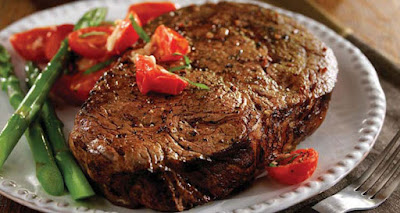Why You Should Serve Steak with Butter

Who doesn't love a thick pat of butter melting on a stack of pancakes or toast? Butter is that ingredient that we just can't seem to get enough of, and when it comes to baked goods, it's practically a necessity. But have you ever considered how butter could amplify the flavor of your favorite cut of tenderloin steak ? Ask any chef or meat master, and they'll tell you butter is a flavorful component of some of their favorite beef recipes. Why is this? Let's take a look at the reasoning behind the combination along with a helpful recipe to get you started. Why Would You Butter Steak? A delicious cut of dry-aged beef is already savory and bursting with flavor on its own, so why would you want to add extra fat to it? Well, the combination of butter with a meaty cut of beef can be compared to adding chocolate chips to waffles. While separate, both ingredients are still delicious, but when combined, they complement and elevateeach other’s flavor.The





